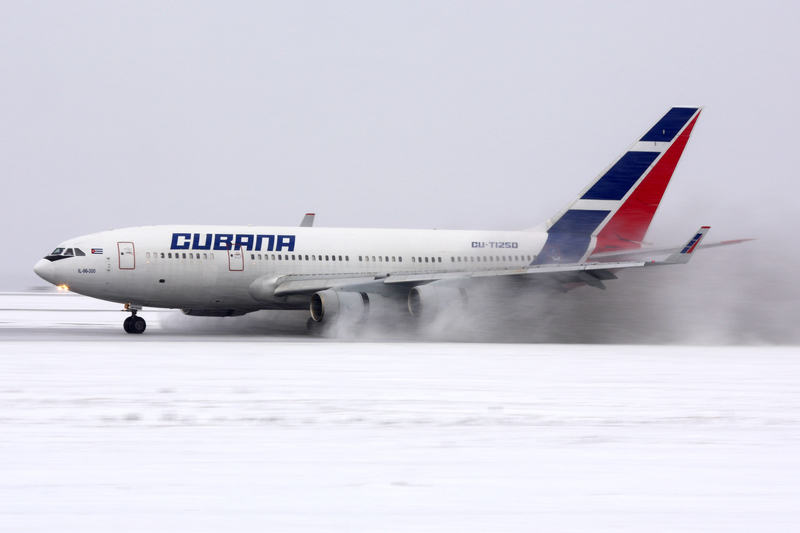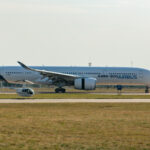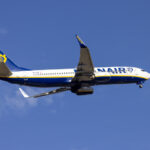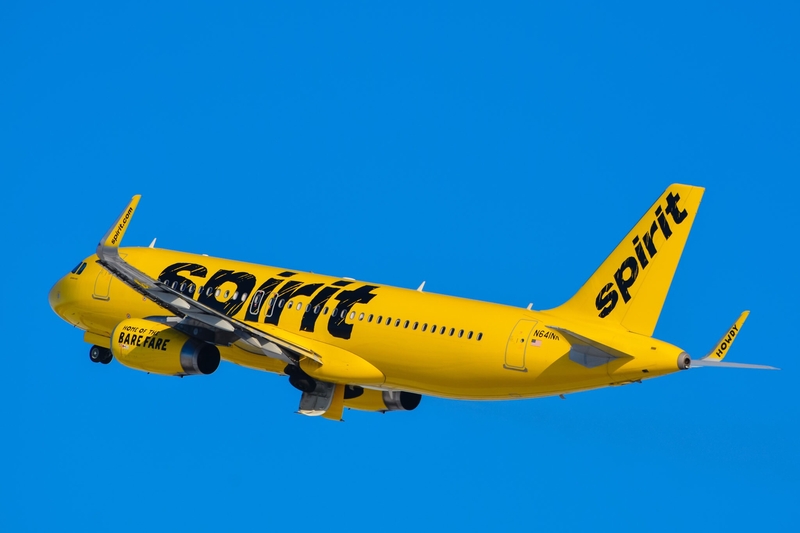Cubana’s Il-96-300 Is Back – Transatlantic Schedule to Germany and Spain

ID 99432752 © Artyomanikeev | Dreamstime.com
Cubana de Aviación has brought a rarity back to life. After a multi-leg ferry from Minsk National (MSQ) via St. Petersburg Pulkovo (LED) and Reykjavík Keflavík (KEF), a freshly overhauled Ilyushin Il-96-300—registration CU-T1250—touched down at Havana José Martí International (HAV) on October 12. The four-engine widebody is slated for winter transatlantic work, with Cubana signaling two weekly flights to Germany and two to Spain (airports to be announced).
A Quad-Jet Unicorn, Back On The Line
For avgeeks, the Il-96-300 needs no introduction: a four-engine, long-haul widebody powered by Aviadvigatel PS-90A turbofans and designed with supercritical wings, winglets, and a glass cockpit. In standard two-class layout it seats ~262 passengers (often quoted as 18J/244Y). Published performance figures put range around 10,000–11,000 km (≈5,400–5,900 nm) depending on payload and configuration—credible for westbound transatlantic sectors from Havana (HAV) but sensitive to winter winds and reserves, which helps explain the multi-stop ferry profile from Minsk (MSQ).
CU-T1250 is approximately 20 years old (built in late 2005) and underwent heavy maintenance overseas before the return flight. Cubana says the airframe will join the winter long-haul schedule while also supporting domestic lift as the airline works to stabilize its operation.
Why The Ferry Looked The Way It Did
Although the Il-96-300 can theoretically link Minsk (MSQ) to Havana (HAV) nonstop—especially as an empty ferry—operators typically plan conservatively on niche types with limited spares pools. Routing MSQ → LED → KEF → HAV kept legs within generous alternates and recovery options, minimized exposure to headwinds, and allowed technical checks after each hop. The final oceanic leg from Reykjavík (KEF) tracked south of Greenland before descending down the North American coast into Havana (HAV).
What Cubana’s Fleet Really Looks Like In 2025
Despite a paper fleet in the teens, only a handful of frames are truly active:
-
Ilyushin Il-96-300: 1 active (CU-T1250), others parked/stored in Havana (HAV) and abroad.
-
ATR 42/72: Core domestic/regional workhorses, but operations are sporadic given parts and fuel constraints.
-
Tupolev Tu-204 / Antonov An-158: Mostly parked/stored, with high reactivation hurdles.
Years of sanctions, hard-currency shortages, and supply-chain friction have left Cubana with an irregular schedule and thin operational resilience. Returning CU-T1250 helps on long-haul where payload-range and belly cargo can support economics—especially on Europe sectors with tour and VFR traffic.
Can The Il-96-300 Sustain Europe Schedules?
On paper, yes—Havana (HAV) to major gateways in Germany and Spain fits the Il-96-300’s envelope, particularly eastbound. Westbound winter headwinds will drive fuel and payload trades. Expect conservative dispatch (fuel reserves and alternates), occasional tech stops if winds spike, and longer blocks than twin-engine peers (A330-200/-300, 787-8/-9, A350-900). Cabin product will be vintage by modern standards, but the novelty of a Russian quad-jet on scheduled transatlantic flying is undeniable.
The Il-96’s Parallel Story: The Stretched -400M
Russia has been trying to reinvigorate the Il-96 line with the Il-96-400M—a stretched, higher-capacity update that flew for the first time in November 2023, powered by uprated PS-90A1 engines. While the prototype is real, serial production remains uncertain and output would be low-rate for the foreseeable future. In practical terms, any near-term Il-96 capacity for civilian use will come from overhauled legacy -300s, not new-build -400Ms.
What To Watch Next
-
Which airports in Europe: Cubana has said Germany and Spain; commercial logic points to Madrid (MAD)/Barcelona (BCN) and Frankfurt (FRA)/Munich (MUC), but final picks will hinge on slots, handling, and sales.
-
Utilization vs. reliability: With a single active Il-96, spares, line maintenance, and contingency lift will dictate schedule stability.
-
Domestic knock-on: More long-haul flying may require juggling ATR utilization on Havana (HAV)—Santiago de Cuba (SCU), Holguín (HOG), Camagüey (CMW), and Managua (MGA) rotations to keep connectivity intact.
Bottom Line
A 20-year-old Ilyushin Il-96-300 (CU-T1250) is back on Cubana’s books after a MSQ–LED–KEF–HAV ferry, and the airline says it will return to Europe this winter with two weekly flights to Germany and two to Spain. The Il-96’s four PS-90A engines, two-crew glass cockpit, and classic widebody lines make it a unicorn in 2025—romantic for enthusiasts, demanding for planners. If Cubana can keep the quad-jet reliable and fed with parts, avgeeks could see one of the world’s rarest passenger widebodies back in regular transatlantic service from Havana (HAV).





